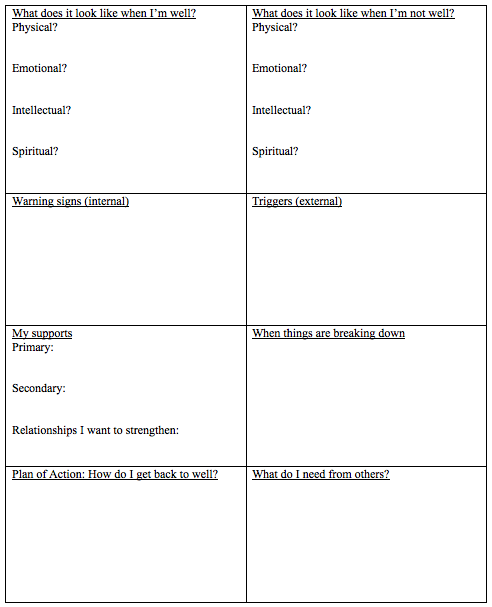Spring has been in full swing even as we feel like we’ve taken a pause in this pandemic. Although we may be staying in place, the weather is moving and shifting towards summer. For many of us, weather and the ability to get outside have been vital components to staying sane these last few months. The pleasure of feeling the sun on our faces, the breeze in our hair, inhaling fresh air, and experiencing the sounds of nature can almost transport us into feelings of normalcy.
Normalcy. Normal. A new normal. A phrase that has appeared to help us better articulate how COVID-19 has impacted our way of living and the ripple effects on our habits, behaviors, and mental health. With spring comes new energy, growth, and restlessness. We’ve seen this in the desire for stay-at-home orders to be lifted, the desire to get outside and have social gatherings, and the desire to go back to seeing clients in person. But what about restlessness as a sign of mental health? There are plenty of articles reporting that a mental health crisis will follow as the result of COVID-19 and will be long lasting. Our mental health communities have been working several months straight to support individuals and families with the changes and stresses that have come in waves. As therapists, we’ve prepared for this to some degree, having built practices working with people experiencing anxiety, depression, and trauma. Yet being human ourselves, we are also holding anxiety and dread for what’s to come simultaneously with holding onto hope that it will get better.
Spring Challenges
You see, COVID-19 wasn’t the only challenge to hit us hard in March. Springtime is considered a challenge because it’s known as a time for increased mental health crises. Spring is a time when those who experience the lows of winter and clinical depression related to the darker months start to shift to having more energy. With more energy comes more risks. For individuals experiencing suicidal thoughts, do they now have the energy to make an attempt? For individuals diagnosed with Bipolar disorder, are they experiencing a burst of energy that puts them at greater risk due to increased manic behaviors? Imagine how these worries each spring can combine with the anticipated increase in hopelessness related to COVID-19. For people who have lost jobs, houses, businesses, and loved ones, hopelessness and grief weighs heavy as the weeks accumulate. In fact, as we enter into another month of the pandemic, we may all be grieving the loss of anticipated events or perceived normalcy that summer could bring. The hopes for a planned vacation, a summer break, a slowing of referrals to allow us to regroup. Like a clenched muscle, we feel we must hold on and don’t yet have permission to relax. There continues to be so much that remains unknown about the future months, adding to the rollercoaster of mood as we struggle with not knowing what to plan for or what to look forward to in the ever-shifting weeks to come.
Balance Over Burnout
There is some lightness to balance out the heavy. Mental health professionals are feeling the powerful beauty of connecting with clients on something they too are experiencing in real time. They are embracing raw emotions, vulnerability, and fear. They are expressing gratitude at being able to work via telehealth. They are standing in awe of their clients’ resiliency.
Therapists are also feeling the burnout of working longer hours and struggling with work separation in working from home. We are human, we are helpers, and we are feeling called to assist others at the risk of caring for ourselves. In connecting with colleagues, it is not uncommon to hear that we feel obligated to help and to remain available. Maybe this would be doable if it was just our clients we were supporting, but for many of us, we are supporting the fear and anxiety of our loved ones, family, and friends as well. It’s a lot to hold, and more than two months in, it’s starting to wear us down.
Slather on the SunscreenWhat can we do to address the growing fatigue as first responders in this pandemic? It’s time to slather on the emotional sunscreen. Embrace this visual of shielding against negativity and practicing professional boundaries. Allow the application of sunscreen to be a gentle and important reminder to protect ourselves from the damage of poor boundaries at the risk of getting burned. Burned by the heavy. Burnt out by the demand. Burnt out by the constant holding of hope and compassion for others. Protecting our emotions. The fight against COVID-19 and its impact on mental health is not over and we are fighting to stay strong.
Reapply Every Two Hours
So let’s take inspiration from BuzzFeed’s 10 Facts About Sunscreen Most People Don’t Know Due to Marketing Tricks. It is recommended we reapply sunscreen every two hours that we are in the sun. In this case, our metaphorical sun represents all the present stressors, glaringly bright and hard to ignore. They make us uncomfortable, irritable, and tired. So we must take precautions. How do we address the sleepiness and lethargy that too much sun brings? How do we step away, regroup, and restore our energy? How do we protect our empathetic skin from over-exposure to harmful elements that can hurt us, leaving us blistered, raw and achy? We must find a way to reapply our emotional sunscreen to fight off fatigue and feeling drained. Sunburn and burnout have discomfort in common.
More than ‘Make Do’
Discomfort is something we know well as therapists. We are masters at sitting in the discomfort of others to help them heal. We are skilled at compartmentalizing, successfully ignoring our own discomfort to help others. Recall the time you held your bladder so as not to interrupt a session? Or took a call after hours because you could? Or came to work with a head cold so as not to disrupt your client’s momentum? We make do in the face of discomfort, perhaps engaging in the bare minimum protective measures to keep it all moving along. Much like makeup with low SPF. It isn’t enough protection for longer exposure to the sun. Sure, it can serve for short spells or quick outings. But when it comes to sun (stress) exposure of the mental health crisis we are currently facing, minimal SPF isn’t going to cut it. We are in this for the long haul and we don’t want to get burned. We need more emotional sunscreen.
Check Your Expiration Date
More time. More stress. We need to check our own expiration dates when it comes to how much we can handle before we require a break. Last week and this week, I have seen an increase in therapists sharing how tired they are and expressing how they feel like they need a break. This is quickly followed by a disclosure that they cannot leave those they are trying to support during this pandemic out of obligation or guilt. I can relate to this thought process. I can relate to the obligation and responsibility we all feel. We’re helpers. However, I’m also going to champion that all of us take a much-needed break in the near future. Staggered it if need be and timing it to allow rest and restoration. It doesn’t have to be extravagant and it doesn’t have to be long. Sunscreen that has expired is no longer considered effective. If we push past our expiration date, we too are no longer effective. We must honor our own expiration dates and the physical and emotion signs of burnout. Notice the signs that we need to rest and restore in order to do right by ourselves and by our clients.
Maybe it’s a stretch to make a connection between sun, stressors, sunscreen, and burnout. Maybe it isn’t. There’s something reassuring about the idea of getting to a place where we can be mindful enough in our plans to remember to apply sunscreen. Can we apply the emotional sunscreen needed to help us engage in meaningful work without getting burned? Can we show up, remain authentic, and be healthy role models for our clients on taking breaks to avoid burnout? It may not be easy task, but it is doable with practice. They say it takes 30 days to make something a habit. Let’s slather on some emotional sunscreen by summer.
Check out Croswaite Counseling PLLC’s Balance Over Burnout, an online course that introduces 5 tools to prevent burnout for therapists and professional helpers.
Check out BuzzFeed’s full article on 10 Facts About Sunscreen Most People Don’t Know Due to Marketing Tricks here.












